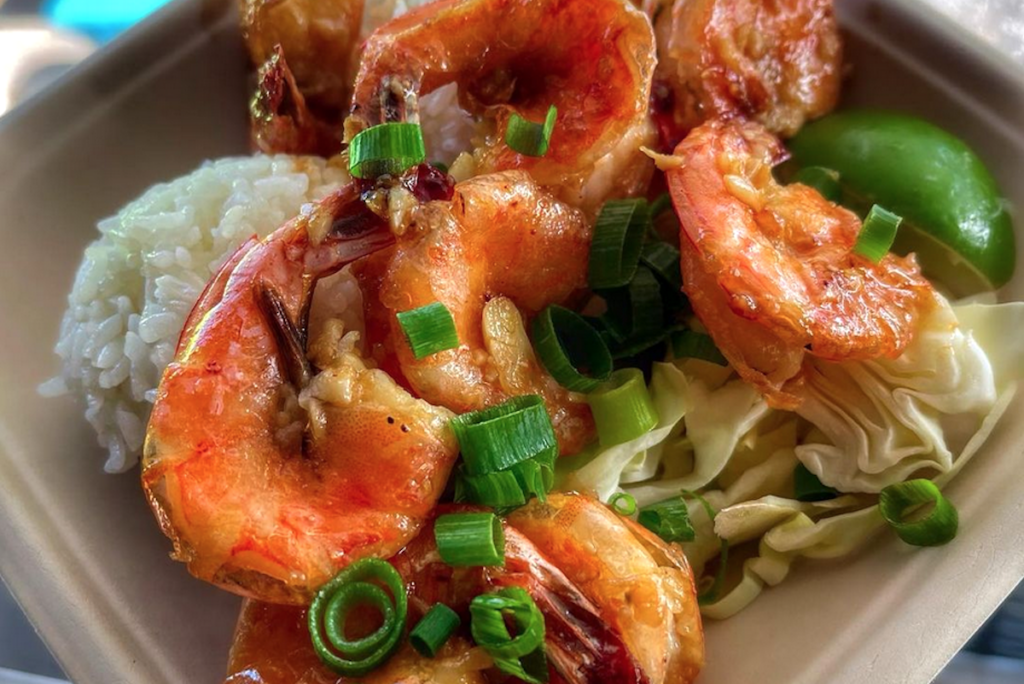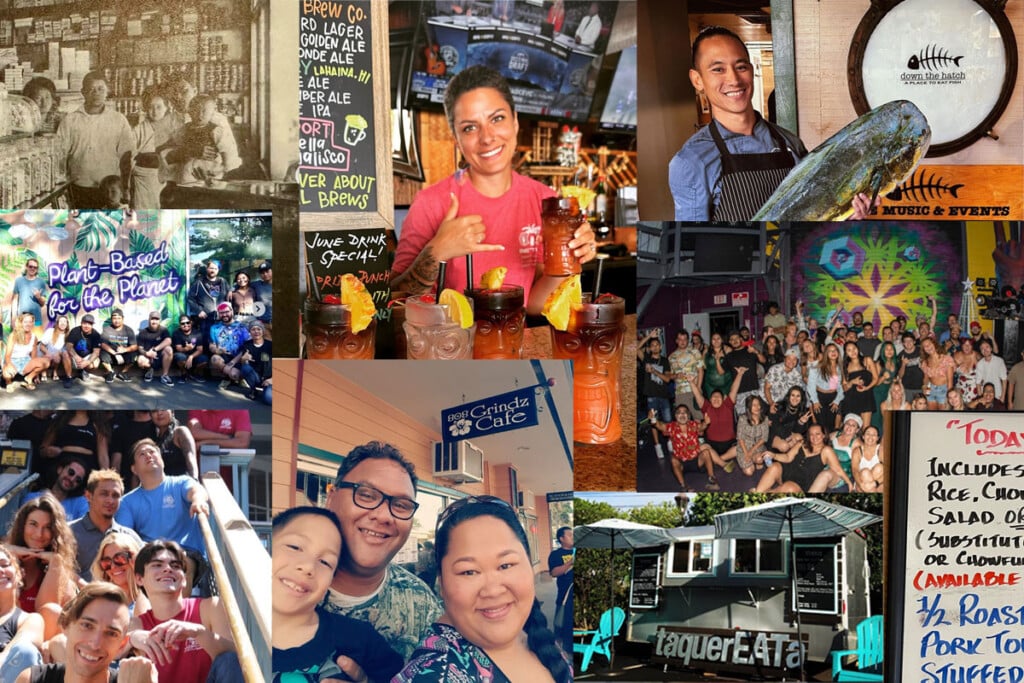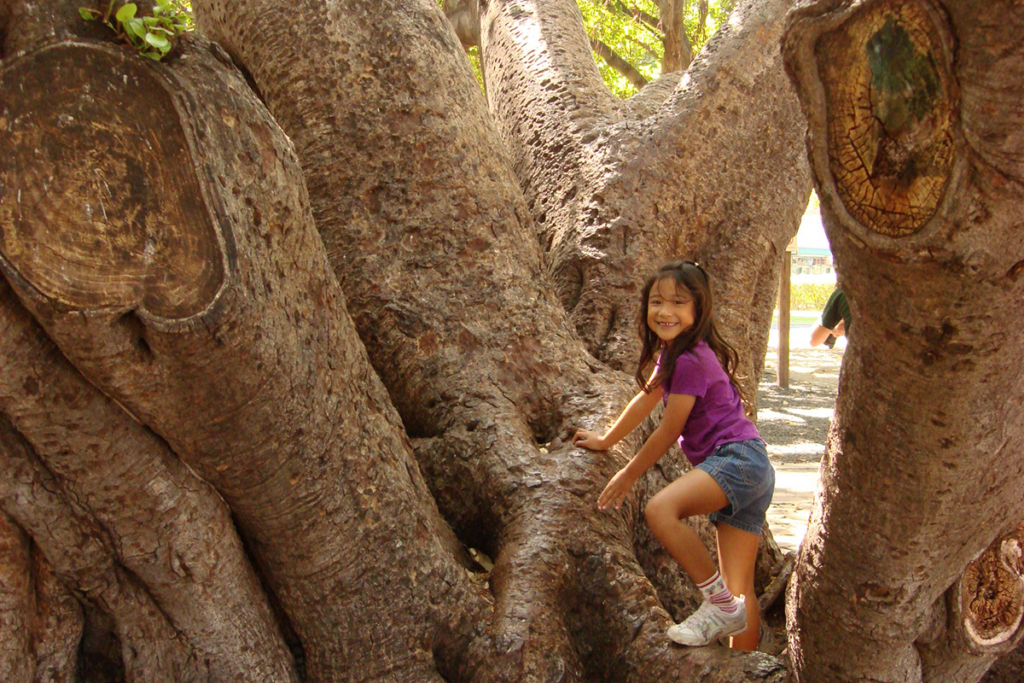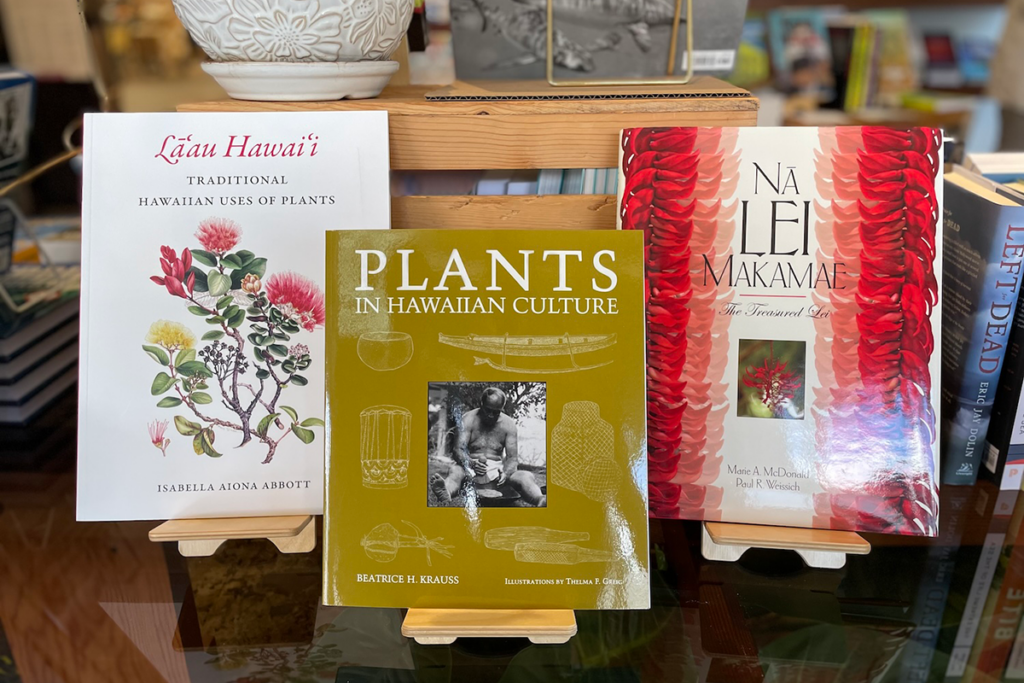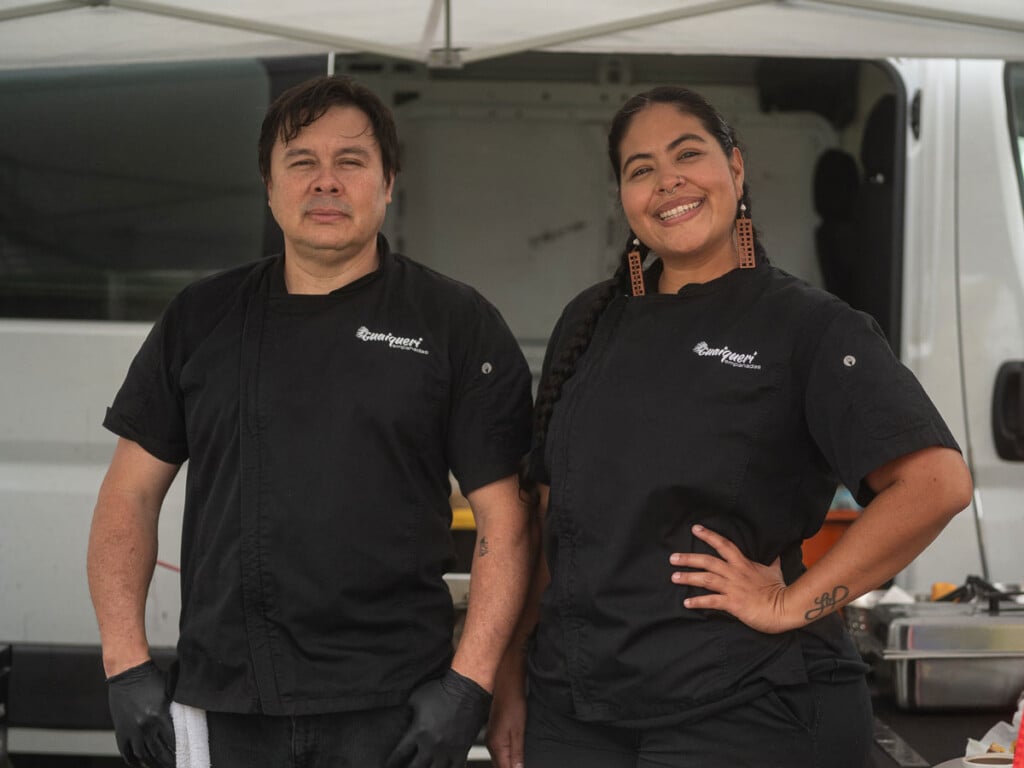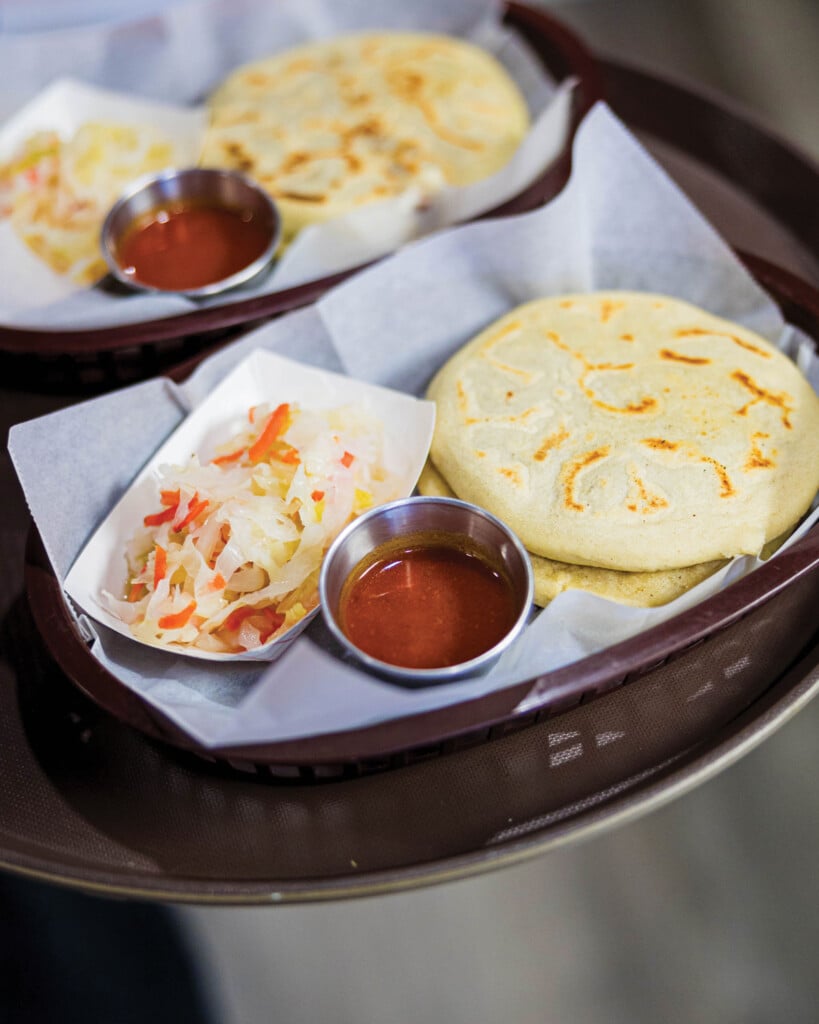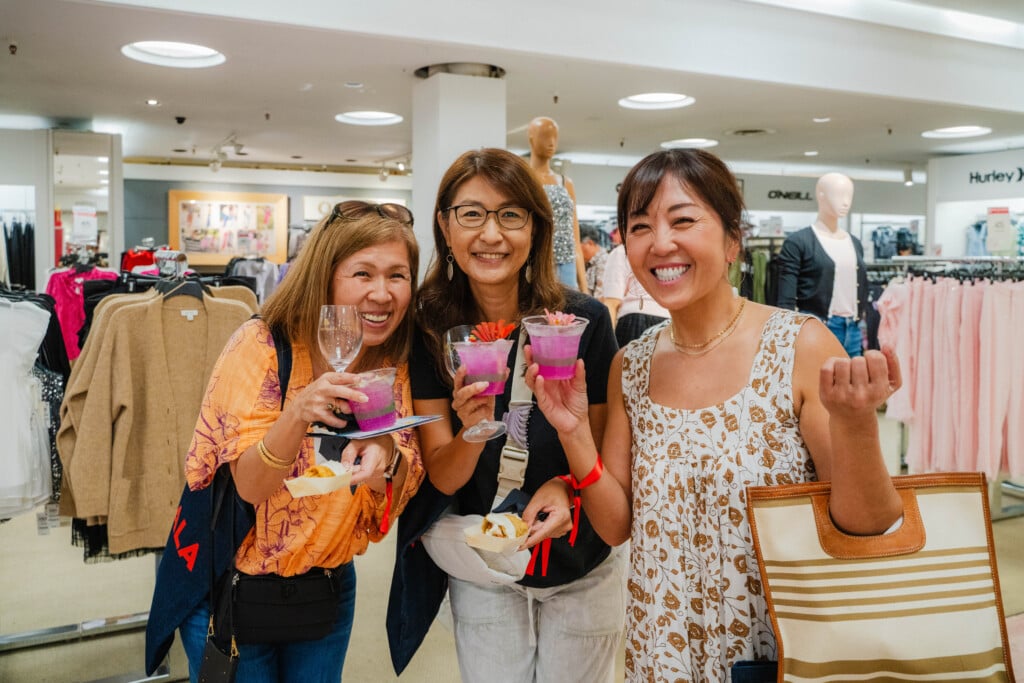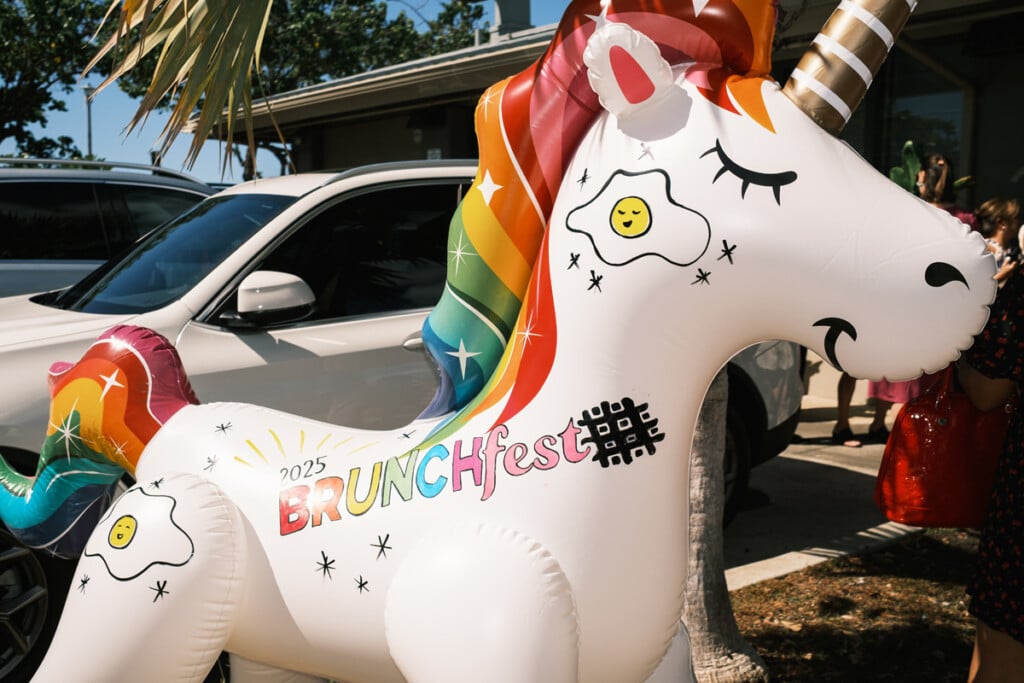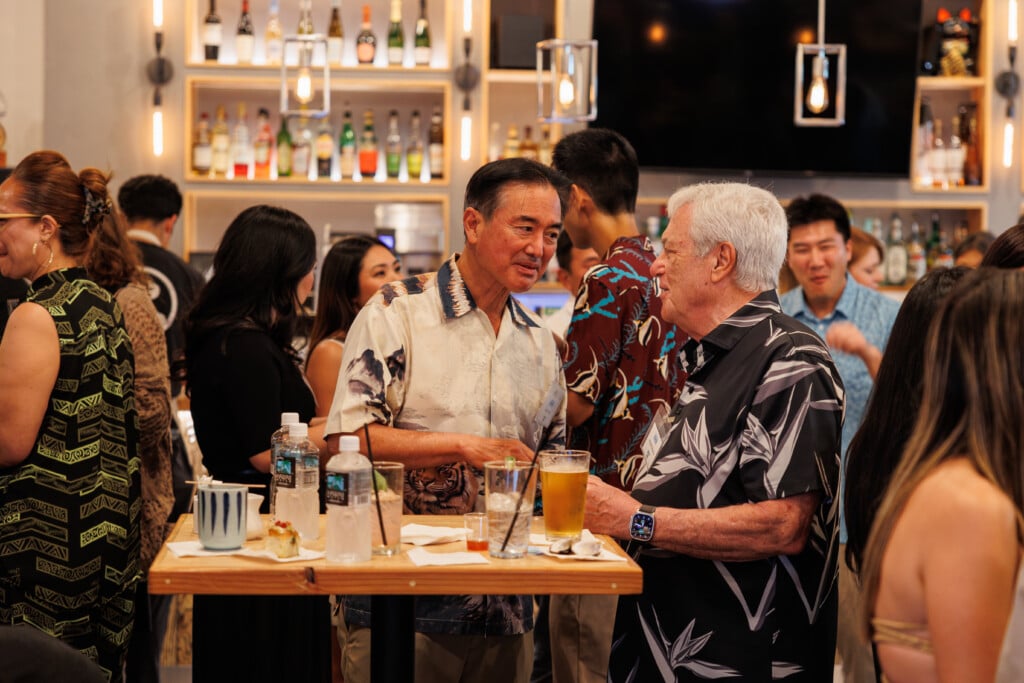The Maui Wildfires, A Year Later: Part 2
We follow up with Lahaina wildfire survivors—a Buddhist priest and a teacher of ‘ōlelo—to see how they’re faring one year later.
Editor’s Note: A year ago, four survivors deeply anchored to Lahaina told us their stories and hopes. Their stories, published in our October 2023 issue, are available online. We followed up with husband-and-wife restaurateurs, a Hawaiian cultural practitioner, a Buddhist priest and a teacher of ‘ōlelo this week to see how they’re faring.
Here’s Part 2, about Liko Rogers of Princess Nāhi‘ena‘ena Elementary School, and the Rev. Gensho Hara of Lahaina Jodo Mission. Find Part 1 here.
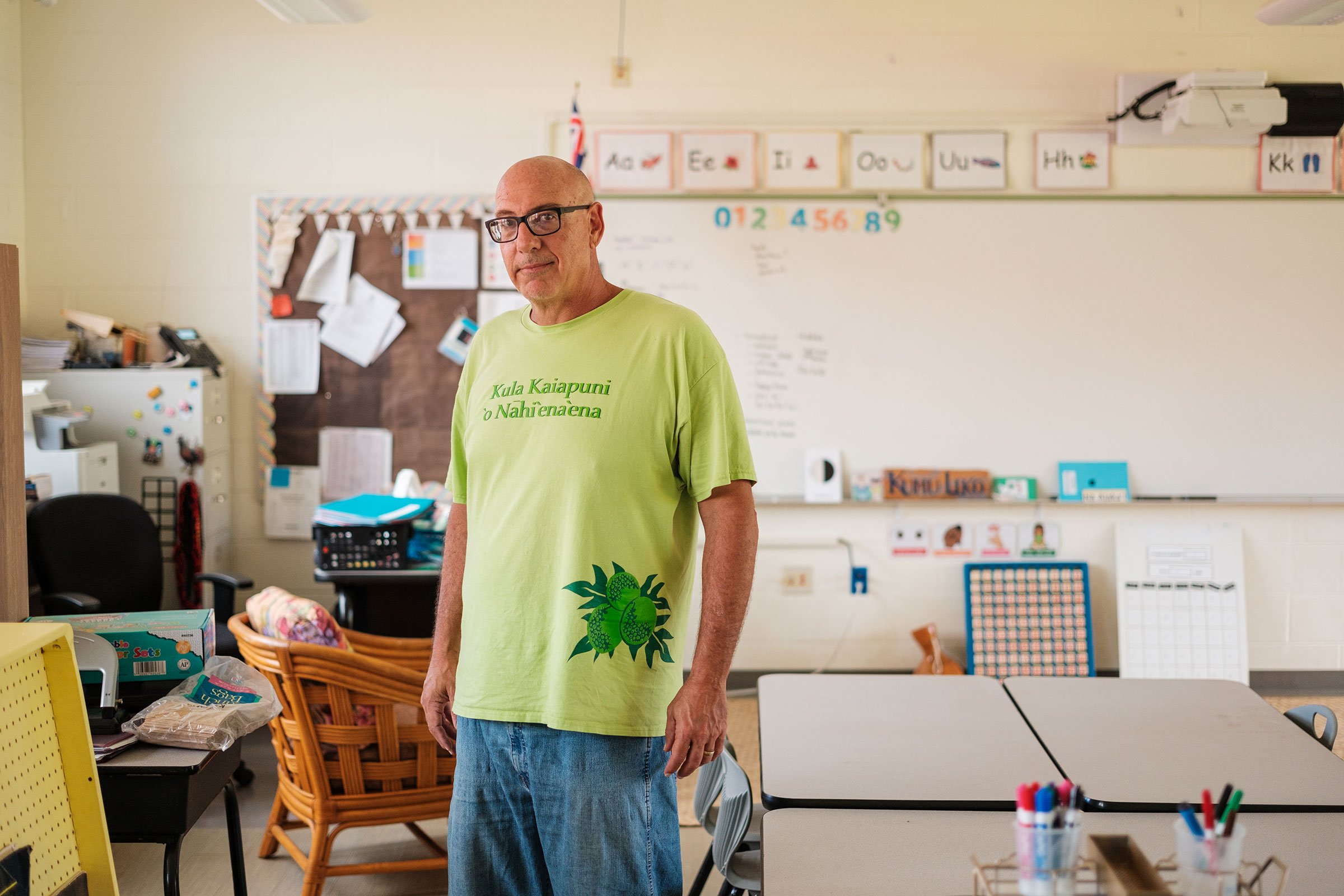
The ‘Ōlelo Teacher
The fires spared Princess Nāhi‘ena‘ena Elementary School, where Liko Rogers teaches ‘ōlelo Hawai‘i, but scattered its students and teachers. Now, Rogers and his kindergarteners are back in their classroom, a key step toward recovery. Read his original story here and our follow-up below.
As told to Ashley Probst
It’s definitely been a difficult year. We’ve had to move maybe seven or eight times. We got a place with FEMA direct lease at the end of May, so we’ve been staying in Mā‘alaea. Our land has been cleaned; it’s ready to rebuild. We’ve been working with a contractor to get that process going. We’re hoping to be back in Lahaina maybe in a year and a half.
The school year was hell—it was horrible for all of us. Right after the fire, there was no school for several weeks until the Department [of Education] could figure everything out.
What we had set up for that [first] month was taking the kids on field trips. Although it was a scramble to plan for all that … actually getting to take the kids out and having them learn hands-on in the different sites of Maui was really a blessing.
In the second quarter, those teachers who did not come back were approached by the Department and asked if we wanted to do a special distance learning program with our immersion students. Their program fulfilled their needs, but not ours.
We pushed to have field trips. At first, they denied us. [Eventually,] they allowed us to do one field trip a week where we were working on the ‘āina, which was really good.
The last quarter, we were able to get classrooms at the Kapalua Airport. We ended up teaching the last quarter with our students there. And then the superintendent told us, at the end of the year, “You need to go back to your schools.” So that’s where we are now.
Currently, there are no efforts underway [to create a separate ‘ōlelo immersion campus]. I mean, after going through what we went through this year, we’re going to need some time to refocus on that goal. So that is still a long-term goal, we’re just kind of more in a short-term field of vision.
This year, I hope to get back into kind of a normalized routine and to reestablish our foundation here as one program. The biggest thing was that some teachers decided to return, some didn’t, and that caused a great division in the program.
I envision that the culture will be preserved, and that the students and graduates from our program will be on the forefront of making sure that happens.
A big part of our program is teaching them stewardship. We teach them that the ‘āina is our ali‘i and that we care for the ‘āina as we would care for our ali‘i and, in turn, if we care for our ali‘i, our ali‘i will care for us. You take care of the land, you farm the land, and the land will give back to you. So those are the kind of values that we teach our kids, and that’s why I believe that it will be them that will help to keep the culture intact.
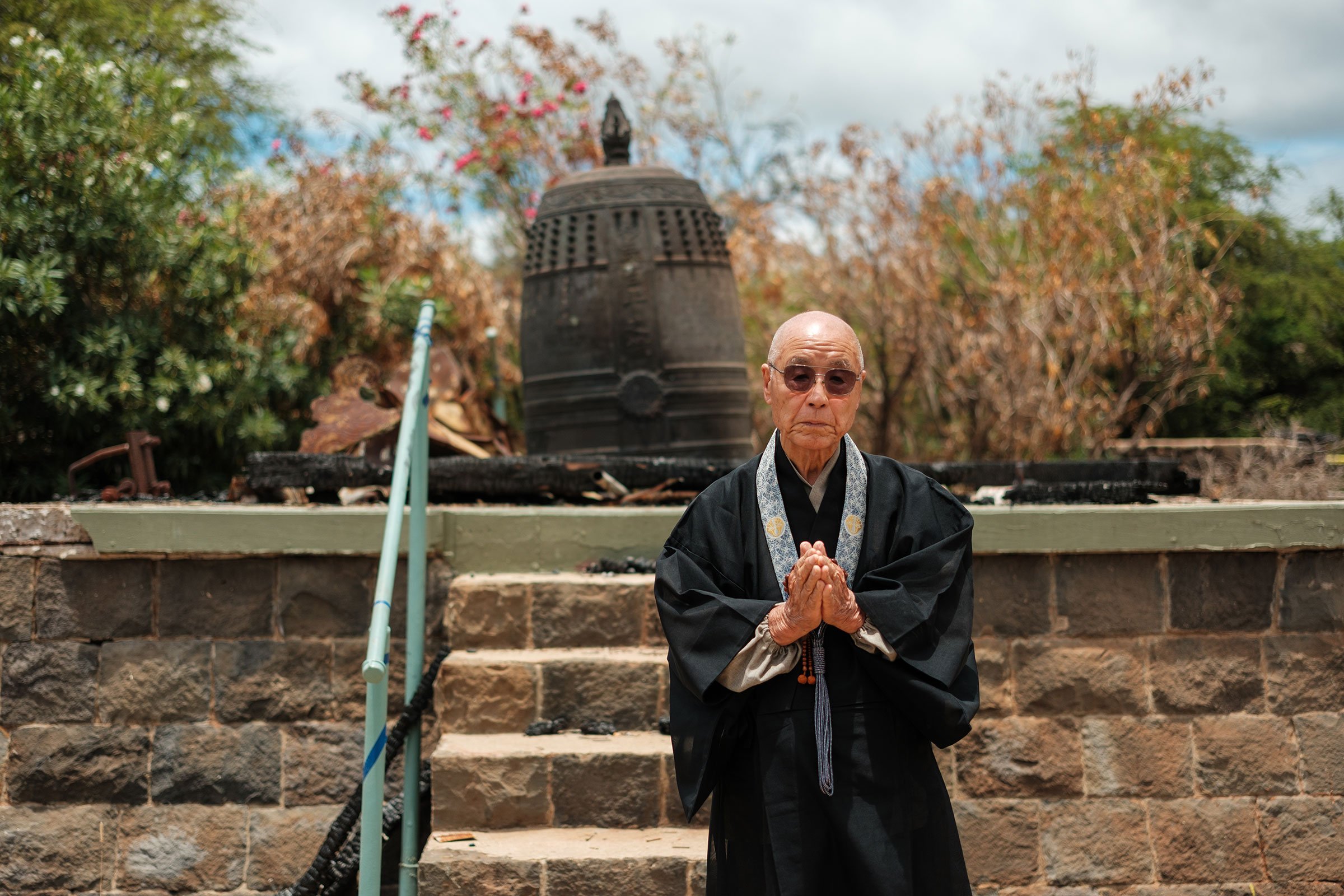
The Minister
The Rev. Gensho Hara escaped with his wife, but lost Lahaina Jodo Mission, his temple of 60 years. At 88, Hara still ministers to his congregation once a month on the now-bare grounds. Read his original story here and our follow-up below.
As told to Mari Taketa
I don’t know if I’ll have enough strength. But I want to join with everyone and do my best toward rebuilding the temple.
I’m fortunate to be able to live with my daughter in Wailuku. Many families have had to move six or seven times. Our temple members are scattered across the island. Some people have gone to the mainland. Some returned to Japan. Those who remain, it’s emotional. We meet and encourage each other.
It’s hard to believe it’s been a year. It seems like a blur. You think deeply about many things.
We lost our temple. But on this island, we also have the Kahului and Wailuku Jodo Mission temples, so we’re able to congregate there. And about once a month, we gather on the temple grounds [in Lahaina]. We even held our bon dance there.
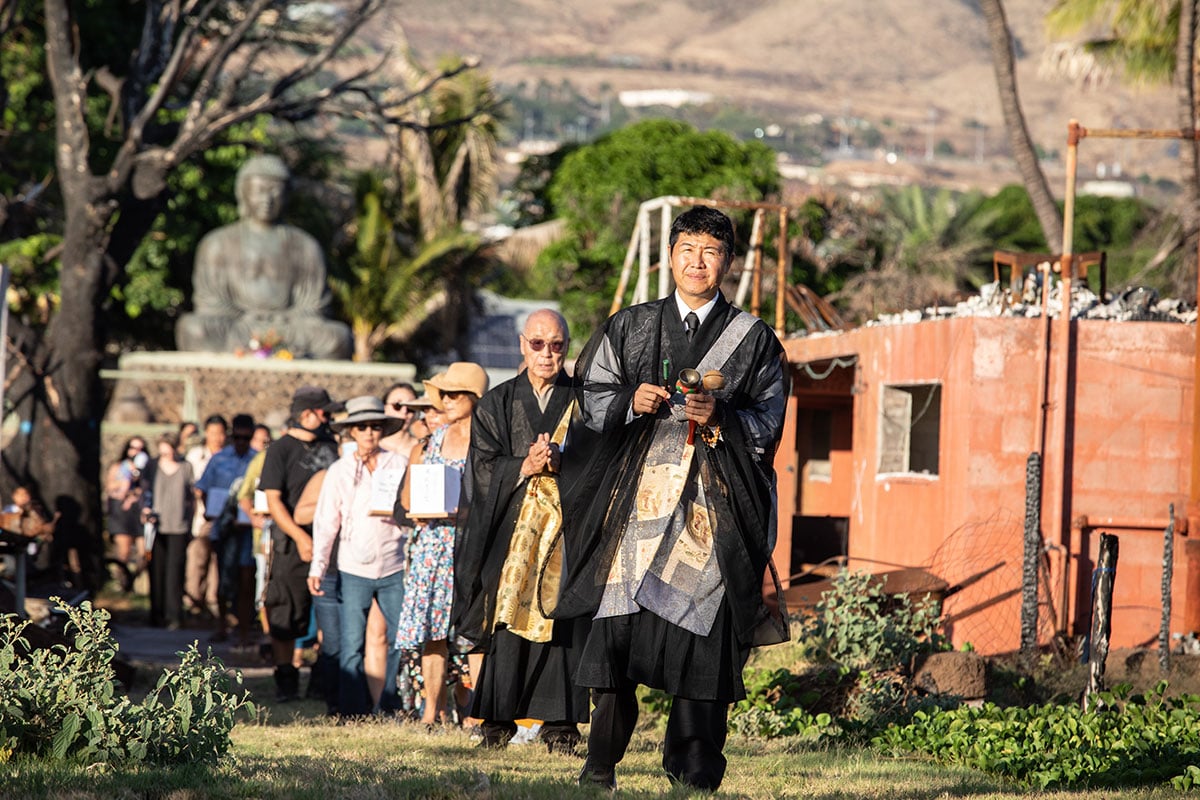
We held it in memory of the 100-plus people who were lost in Lahaina, including four members of our temple. The people who came danced on the burned lawn. We used to have a toro nagashi (lantern floating ceremony to remember those who have passed) every year, and we even did that this year, though with reduced numbers.
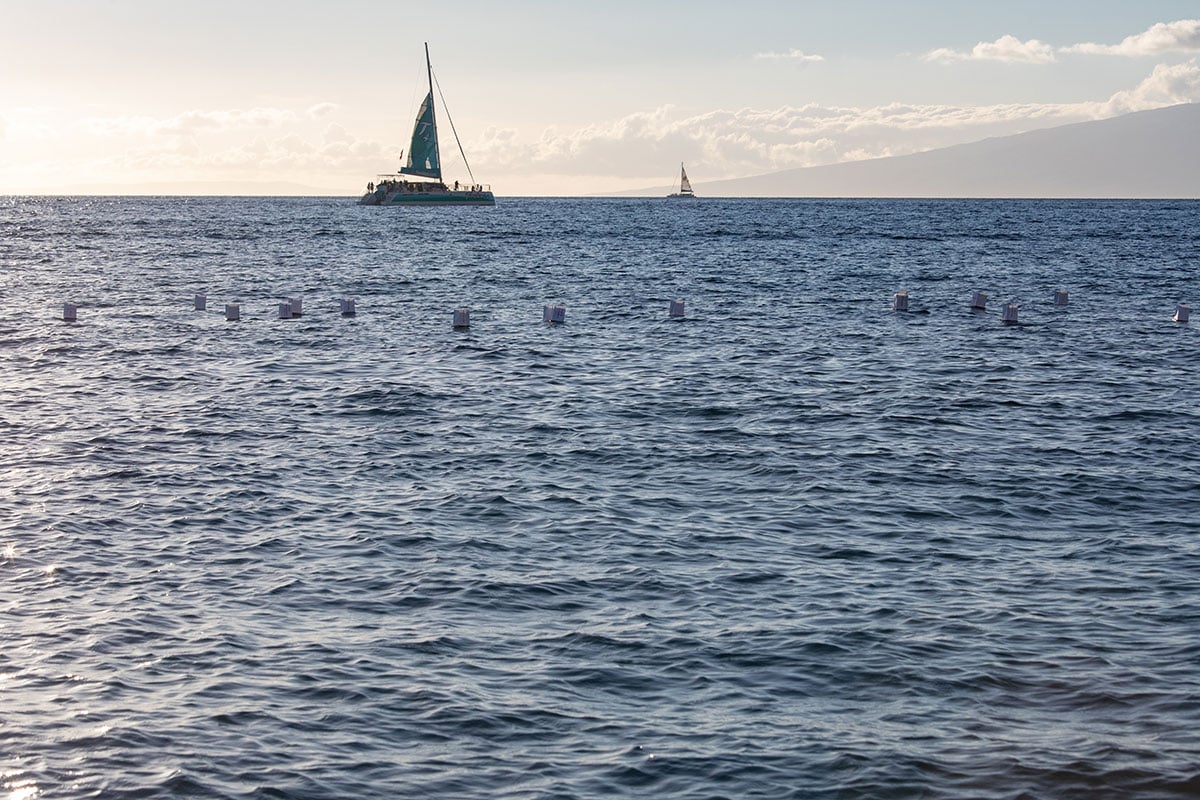
The temple grounds still haven’t been cleaned up. We limited it to congregation members and families. So it was a very small number.
There were deep emotions.
I don’t know if my beliefs have grown deeper or less so. But so many people I don’t even know have offered encouragement, and I am truly grateful.
Life’s journey is not easy. Everyone has been so tough. Our members, there are many elderly who have lived a long time so they haven’t asked questions [about how to reconcile the fire with their beliefs]. They’ve worked hard and done their best. They know they’re alive not only through their own efforts, but because of Amida Buddha’s great compassion and embrace. I’m sure that gratitude is in everyone’s hearts.
That’s how I feel. That I’m being allowed to live. I’m not alive because of any effort I make, but because of a great compassion and great love.
In Buddhism, shomyo, everything is changing. And there’s no eternal thing. We understand that in our minds. But those who survived the fires, they understand this to their core.
More coverage of Maui a year later


